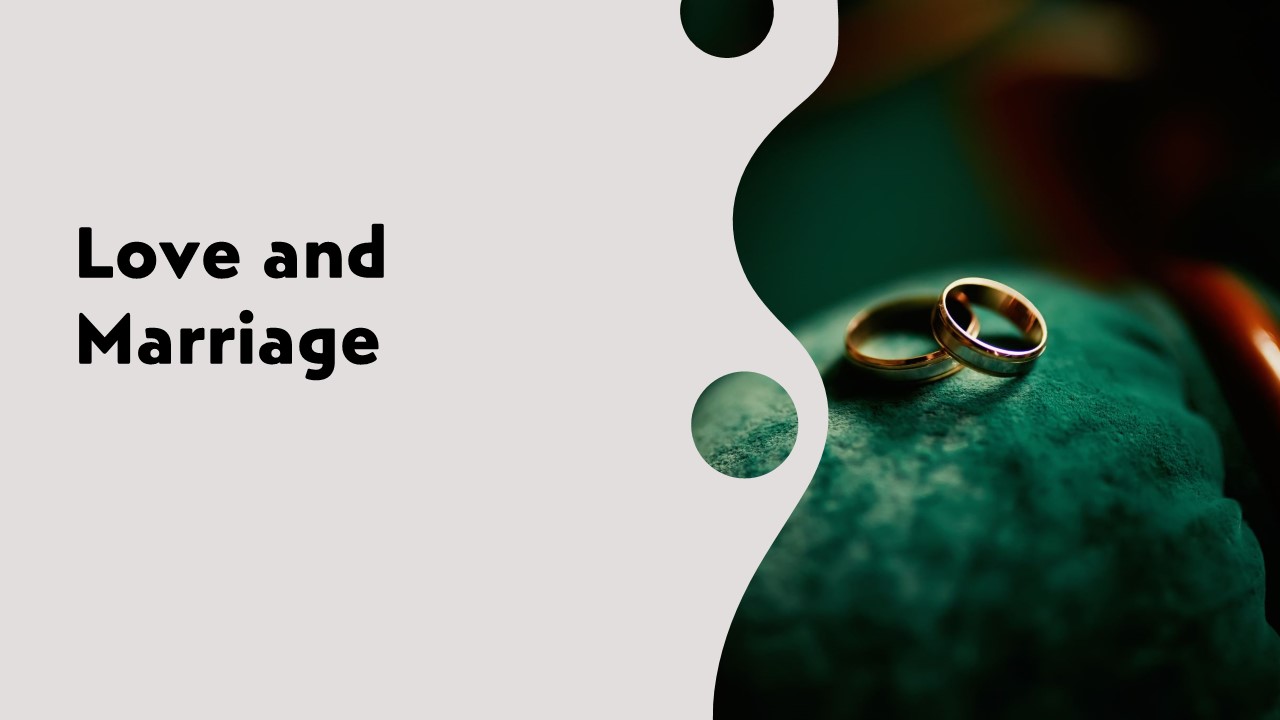Would you marry someone who is beautiful or handsome, kind, smart, honest, dependable, and industrious, as well as having many other qualities you desire in a mate, but you are not in love with her or him?
What do men and women believe is important for love and marriage?
It seems natural and sounds like common sense that men and women have expectations of mutual interest in mating relationships. Everyone wants not only to love but also to be loved. Unrequited love is a bummer! This is why men and women, when in love with someone, are eager to guess whether they are loved by their beloved or not.
Love and Marriage in the Historical Past
It should be noted that during other historical periods and in other cultures, love played a small role, if any, in the selection of a marriage partner. Many romantic ideals of love and mutual attraction have been depicted in novels and paintings. For centuries, they have served as romantic inspirations for youngsters from wealthy and educated social classes. The reality of marriage was more practical for the majority of people across the world (see many examples in Karandashev, 2017).
The roles of mutual attraction and love have been different in traditional conservative cultures with arranged marriages and in modern liberal cultures with free marriage choices. Nevertheless, as studies have demonstrated throughout years of research, for young men and women, mutual attraction and love are among their main preferences. And the role of these motivators has been constantly increasing over the recent years of cultural evolution across many societies.
What Did the Early Studies of Mating Preferences Reveal?
In the United States, Canada, and many European countries of the 1950s and 1960s, young people substantially increased the value of love and mutual attraction in their marital choices. Many men and women in modern societies have begun to consider love as the basis for marriage. Several studies documented that evidence in their surveys. Nonetheless, for some people in many societies and social classes love was not a requirement for marriage and was far from these ideals (see for review, Karandashev, 2017).
A study of the 1980s administered across 33 nations in 37 cultural samples from many religious, ethnic, and cultural groups identified the personality traits and the qualities of physical attractiveness and resourcefulness that men and women in various societies preferred to find in potential mates (see in Buss, 1994; Buss et al., 1989).
In the 1990s, men and women in various societies around the world viewed mutual attraction and love as the most desirable qualities in their relationships with potential mates. Many men and women in the United States, as well as in many other contemporary industrialized societies, believed that love was the primary basis for marriage (Allgeier & Wiederman, 1991).
Cultural Evolution of the Value of Mutual Attraction in Love and Marriage
How has the value of love changed throughout modern societies and cultural generations?
Several recent cultural and cross-cultural studies have shown that mutual attraction and love play stable and even increasing roles in mating and partnership in both traditional and modernized countries. Modern men and women commonly connect love and marriage in their dreams.
A historical comparative study of the geographically diverse samples in the USA, despite the modest sample size, demonstrated stability as well as cultural evolution of mating preferences throughout the 1939–1996 period in terms of the personality, physical, and social attributes of potential partners. Data also showed that mutual attraction and love remained and even increased their mating value during that 57-year period for both men and women. This increase in the cultural value of love and attraction for marriage among North American university students suggested that marriage was evolving to a companionate type (Buss et al., 2001).
Two other historical comparative studies analyzed the data of the 1980s and 2010s in Brazil (Souza et al., 2016) and India (Kamble et al., 2014). Researchers in both studies discovered that love and mutual attraction, kindness, and understanding (among other things) remained important in mate preferences over time.
The results from India were especially noteworthy. It was evident that, despite the long tradition of arranged marriages, young people in India have always wanted love in their marriages. Those who are familiar with Hindi cinema know that Bollywood romantic movies have traditionally featured grandiloquent dialogue and all-important songs and dances of love. These melodramatic stories of love are full of elevated emotions and expressions and beautifully illustrate the dreams of mutual attraction and love among Indian people. The latter did not preclude understanding the practical value of arranged marriages (Dwyer, 2014).
Modern Studies of Preferences in Love and Marriage
Several studies of recent times have shown that love and mutual attraction remain the enduring motivations of men and women for mating, partnership, and marriage. The authors reported their research data obtained in such culturally diverse countries as Jordan (Khallad, 2005), India (Kamble et al., 2014), Brazil (Souza, Conroy-Beam, & Buss, 2016), and the United States of America (Buss et al., 2001).
